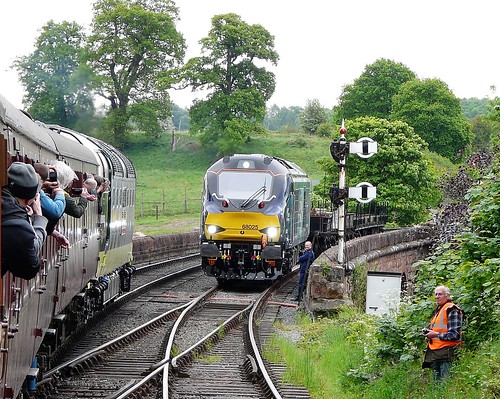Ternal errors generated by DNA polymerase (Pol), which requires more than for Pol to complete lagging-strand replication. When we compared MMR efficiency for errors created by variant types of these two polymerases, Msh-dependent repair efficiencies for mismatches made by Pol have been regularly greater than for those similar mismatches when TCS-OX2-29 produced by PolThus, a single specific partnership involving MMR and replication is the fact that MMR is far more efficient for the least precise of your big replicative polymerases, exonuclease-deficient PolThis observation is consistent with the close proximity and achievable use of ends of Okazaki fragments for strand discrimination, which could raise the probability of Msh-dependent MMR by excision, by a Msh-dependent strand displacement mechanism, or both.replication fork base substitutionsarious varieties of DNA repair, such as base excision repair, nucleotide excision repair, double-strand DNA break repair, and mismatch repair (MMR), are differentiated into subpathways that could be distinguished by substrate specificity and enzymologyThis is specifically correct for DNA mismatch repair (reviewed in refs.), which can inve PubMed ID:http://www.ncbi.nlm.nih.gov/pubmed/23236172?dopt=Abstract any of numerous distinct protein complexes at sequential measures inside the pathway. By way of example, repair of mismatches generated throughout eukaryotic DNA replication is initiated upon mismatch binding by Msh-Msh or Msh-Msh, and subsequent measures can inve 3 various MutL heterodimers (reviewed in ref.). Beginning from a nick within the nascent DNA strand, mismatches could be removed by excision. Current evidence suggests that mismatches may also sometimes be removed by a strand displacement mechanismIn either case, removal from the mismatch calls for a DNA strand discontinuity. Research in vitro demonstrate that this discontinuity is usually a nick situated either or for the mismatch, together with the protein requirements for MMR (RS)-Alprenolol hydrochloride site differing somewhat depending on the location on the nick relative for the mismatch (see refs. and and references therein). Early experiments in Escherichia coli revealed that a single signal that directs MMR towards the nascent strand is transient under-methylation of adenine in GATC sequences, allowing MutH endonuclease to nick that strand to direct MMR. However, several other bacteria and eukaryotes usually do not methylate adenine and lack MutH, such that strand discrimination depends on other, however to become determined signals. One particular general possibility for signaling was recommended more  than years ago by Wagner and Meselson , who wrote that mismatch repair might happen with especially high efficiency around the newly synthesized DNA strand because of “a specific relation for the replication complex.” Considering the fact that that time, it has turn out to be clear that replication and MMR use many in the exact same proteins. This acquiring consists of functionally asymmetric sliding clamps i.ethe bacterial December , no.V-clamp and eukaryotic proliferating cell nuclear antigen (PCNA). These clamps stimulate processive DNA synthesis, and PCNA can also be necessary for early actions in MMR that precede resynthesis with the nascent strand and also see ref.Sliding clamp invement in replication and MMR led to the suggestion that these two processes may well be coupled , such that the ends in the developing DNA chains at the replication fork (,) and the quite a few ends of Okazaki fragments present for the duration of lagging-strand replication , might act in coordination with clamps to direct MMR towards the nascent strand (see ref. for additional discussion). The possibility that replication and MMR may perhaps be coupled implies that an understandi.Ternal errors generated by DNA polymerase (Pol), which requires more than for Pol to complete lagging-strand replication. When we compared MMR efficiency for errors created by variant forms of those two polymerases, Msh-dependent repair efficiencies for mismatches made by Pol have been consistently greater than for those very same mismatches when produced by PolThus, one particular particular connection involving MMR and replication is the fact that MMR is extra efficient for the least correct with the big replicative polymerases, exonuclease-deficient PolThis observation is constant using the close proximity and feasible use of ends of Okazaki fragments for strand discrimination, which could raise the probability of Msh-dependent MMR by excision, by a Msh-dependent strand displacement mechanism, or each.replication fork base substitutionsarious varieties of DNA repair, which includes base excision repair, nucleotide excision repair, double-strand DNA break repair, and mismatch repair (MMR), are differentiated into subpathways that can be distinguished by substrate specificity and enzymologyThis is particularly correct for DNA mismatch repair (reviewed in refs.), which can inve PubMed ID:http://www.ncbi.nlm.nih.gov/pubmed/23236172?dopt=Abstract any of many diverse protein complexes at sequential measures within the pathway. As an example, repair of mismatches generated throughout eukaryotic DNA replication is initiated upon mismatch binding by Msh-Msh or Msh-Msh, and subsequent actions can inve 3 distinctive MutL heterodimers (reviewed in ref.). Starting from a nick within the nascent DNA strand, mismatches is often removed by excision. Current proof suggests that mismatches could also in some cases be removed by a strand displacement mechanismIn either case, removal in the mismatch requires a DNA strand discontinuity. Research in vitro demonstrate that this discontinuity could be a nick situated either or for the mismatch, with all the protein specifications for MMR differing somewhat based around the place on the nick relative to the mismatch (see refs. and and references therein). Early experiments in Escherichia coli revealed that 1 signal that directs MMR for the nascent strand is transient under-methylation of adenine in GATC sequences, allowing MutH endonuclease to nick that strand to direct MMR. Nevertheless, quite a few other bacteria and eukaryotes do not methylate adenine and lack MutH, such that strand discrimination is dependent upon other, yet to become determined signals. One particular common possibility for signaling was recommended
than years ago by Wagner and Meselson , who wrote that mismatch repair might happen with especially high efficiency around the newly synthesized DNA strand because of “a specific relation for the replication complex.” Considering the fact that that time, it has turn out to be clear that replication and MMR use many in the exact same proteins. This acquiring consists of functionally asymmetric sliding clamps i.ethe bacterial December , no.V-clamp and eukaryotic proliferating cell nuclear antigen (PCNA). These clamps stimulate processive DNA synthesis, and PCNA can also be necessary for early actions in MMR that precede resynthesis with the nascent strand and also see ref.Sliding clamp invement in replication and MMR led to the suggestion that these two processes may well be coupled , such that the ends in the developing DNA chains at the replication fork (,) and the quite a few ends of Okazaki fragments present for the duration of lagging-strand replication , might act in coordination with clamps to direct MMR towards the nascent strand (see ref. for additional discussion). The possibility that replication and MMR may perhaps be coupled implies that an understandi.Ternal errors generated by DNA polymerase (Pol), which requires more than for Pol to complete lagging-strand replication. When we compared MMR efficiency for errors created by variant forms of those two polymerases, Msh-dependent repair efficiencies for mismatches made by Pol have been consistently greater than for those very same mismatches when produced by PolThus, one particular particular connection involving MMR and replication is the fact that MMR is extra efficient for the least correct with the big replicative polymerases, exonuclease-deficient PolThis observation is constant using the close proximity and feasible use of ends of Okazaki fragments for strand discrimination, which could raise the probability of Msh-dependent MMR by excision, by a Msh-dependent strand displacement mechanism, or each.replication fork base substitutionsarious varieties of DNA repair, which includes base excision repair, nucleotide excision repair, double-strand DNA break repair, and mismatch repair (MMR), are differentiated into subpathways that can be distinguished by substrate specificity and enzymologyThis is particularly correct for DNA mismatch repair (reviewed in refs.), which can inve PubMed ID:http://www.ncbi.nlm.nih.gov/pubmed/23236172?dopt=Abstract any of many diverse protein complexes at sequential measures within the pathway. As an example, repair of mismatches generated throughout eukaryotic DNA replication is initiated upon mismatch binding by Msh-Msh or Msh-Msh, and subsequent actions can inve 3 distinctive MutL heterodimers (reviewed in ref.). Starting from a nick within the nascent DNA strand, mismatches is often removed by excision. Current proof suggests that mismatches could also in some cases be removed by a strand displacement mechanismIn either case, removal in the mismatch requires a DNA strand discontinuity. Research in vitro demonstrate that this discontinuity could be a nick situated either or for the mismatch, with all the protein specifications for MMR differing somewhat based around the place on the nick relative to the mismatch (see refs. and and references therein). Early experiments in Escherichia coli revealed that 1 signal that directs MMR for the nascent strand is transient under-methylation of adenine in GATC sequences, allowing MutH endonuclease to nick that strand to direct MMR. Nevertheless, quite a few other bacteria and eukaryotes do not methylate adenine and lack MutH, such that strand discrimination is dependent upon other, yet to become determined signals. One particular common possibility for signaling was recommended  over years ago by Wagner and Meselson , who wrote that mismatch repair may well take place with particularly higher efficiency on the newly synthesized DNA strand because of “a special relation to the replication complicated.” Considering that that time, it has become clear that replication and MMR use many from the very same proteins. This locating incorporates functionally asymmetric sliding clamps i.ethe bacterial December , no.V-clamp and eukaryotic proliferating cell nuclear antigen (PCNA). These clamps stimulate processive DNA synthesis, and PCNA is also expected for early methods in MMR that precede resynthesis in the nascent strand as well as see ref.Sliding clamp invement in replication and MMR led to the suggestion that these two processes may perhaps be coupled , such that the ends with the increasing DNA chains in the replication fork (,) plus the quite a few ends of Okazaki fragments present in the course of lagging-strand replication , may possibly act in coordination with clamps to direct MMR to the nascent strand (see ref. for additional discussion). The possibility that replication and MMR could be coupled implies that an understandi.
over years ago by Wagner and Meselson , who wrote that mismatch repair may well take place with particularly higher efficiency on the newly synthesized DNA strand because of “a special relation to the replication complicated.” Considering that that time, it has become clear that replication and MMR use many from the very same proteins. This locating incorporates functionally asymmetric sliding clamps i.ethe bacterial December , no.V-clamp and eukaryotic proliferating cell nuclear antigen (PCNA). These clamps stimulate processive DNA synthesis, and PCNA is also expected for early methods in MMR that precede resynthesis in the nascent strand as well as see ref.Sliding clamp invement in replication and MMR led to the suggestion that these two processes may perhaps be coupled , such that the ends with the increasing DNA chains in the replication fork (,) plus the quite a few ends of Okazaki fragments present in the course of lagging-strand replication , may possibly act in coordination with clamps to direct MMR to the nascent strand (see ref. for additional discussion). The possibility that replication and MMR could be coupled implies that an understandi.
http://cathepsin-s.com
Cathepsins
